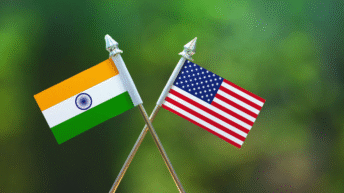
Last month, Prime Minister Narendra Modi virtually inaugurated the 48-km Banihal-Sangaldan railway while on a visit to Jammu. The remoteness of the area, inaccessibility and inclement weather made it a very challenging task for Northern Railway. Despite what looked like unimaginable difficulties at one time, the Udhampur-Srinagar-Baramulla Rail Line (USBRL) project is nearing completion now. In fact, it is expected that by July or August this year, train services will start on this route. The 186 km Sangladan-Baramulla section is now fully functional and regular train services have started here.
An interesting feature of this stretch is that most of it passes through a series of 11 tunnels of which the longest, T49, between Khari and Sumber section, is of 12.77 km, according to officials associated with the project. In fact, of the 48 km Banihal-Snagaldan section, no less than 43.70 km journey is through tunnels burrowed deep into the mountains. That means over 90 per cent of this railway track is located in tunnels and ballast-less (or slab) tracks have been used here. This is akin to the tracks we see in Metro stations, with no loose ballast, and concrete.
Another thing worth mentioning about this section of 48 km is that it was completed at a cost of over Rs 15,863 crore, which means it cost over Rs 330 crore per km! The construction of the 272-km USBRL was announced in February 1997. However, it made little progress thereafter and liberal funding started only when late Atal Behari Vajpayee declared it as National Project in 2002. Almost two decades earlier, Indira Gandhi had announced the construction of the Jammu-Udhampur rail link in June 1983. However, only the Jammu-Bajalta stretch of 12 km was ready in 1996 as the funding was very low and less than one km of track was being completed every year in that period.
Train to Kashmir
The 272-km long USBRL will connect Kashmir valley with the rest of the country through a railway network and it is going to be a huge disruptive change. Overall, there are 38 tunnels on this entire route with a total length of 119 km, besides 927 bridges. The slogan `Kashmir to Kanyakumari’ will have a different ring to it soon as travelling this distance on trains becomes possible. The change this rail link will herald in terms of integration, as also ease of travel and transportation, is going to be matchless. This will be a major milestone just nearly as significant as removal of Article 370 has been for the nation and the Union Territory (UT) of Jammu & Kashmir. Incidentally, of a total length of 272 km USBRL, no less than 161 km rail track has already been commissioned.
The Jammu-Udhampur rail track became functional in April 2005 and the 25-km rail track to Katra, the base camp for Shri Mata Vaishno Devi shrine, received its first train in July 2014. There are now plans to modernise Katra railway station as a city centre with provision of amenities like roof plaza, food court and other things besides. In fact, the facilities will be similar to what we see at airport terminals, rather than our railway stations. This is expected to give a huge boost to socio-economic activities in the region.
The Chenab bridge, located between Katra and Reasi railway stations, is the tallest rail bridge worldwide having a height of 359 meters (taller than Eiffel Tower of 330 meters) and spanning 1,315 meters. This bridge was completed a couple of years ago and has become a tourist attraction already. The work on this bridge had started in August 2004 and the construction was completed 18 years later in August 2022.
After Reasi (towards Banihal and beyond), all the railway stations on USBRL track get snowfall in winters and this is expected to attract tourists in hordes. The stretch between Reasi and Banihal has remained unexplored and is virgin territory in terms of tourist footfalls.
It is worth mentioning here that the first train had reached Jammu in March 1890 during the reign of Maharaja Pratap Singh. At that time, the railway route was through Jalandhar, Amritsar, Lahore, Sialkot and Jammu. However, trains made their last journeys on these tracks in October 1947 after the creation of Pakistan. It was 25 years later in October 1972 that Jammu got its next train via Jalandhar, Pathankot, Kathua and Samba.
Interestingly, when the 38-km Sialkot-Jammu rail track was declared open on March 13, 1890, the Maharaja announced free rides for all on the first two days. As such, over 10,000 people used the trains between Jammu and Sialkot on this route for joyrides then, according to Versha Gupta who teaches in the History Department, Jammu University. From March 1890 to October 1947, the first station after Sialkot (towards Jammu) was Suchetgarh. It was as part of the economic blockade plan of Jammu & Kashmir that Pakistan had stopped the train to Jammu in October 1947.
Key milestones
When the country became independent in August 1947, no train services were available in Jammu & Kashmir. The Jalandhar-Pathankot line had become functional in 1952 but it was only after the 1965 war that this line was extended to Jammu. The doubling as also electrification work on the Jammu-Jalandhar line of 216 km was completed in 2014.
The train services started between Jalandhar and Jammu in October 1972; between Jammu and Udhampur (55 km) in April 2005 and between Udhampur and Katra (25 km) in July 2014. In the Kashmir valley, Anantnag-Mazhom (68 km) section became operational in October 2008; Mazhom to Baramulla (32 km) in February 2009 and Qazigund-Banihal (18 km) section in June 2013. As such, it has taken more than a decade for the Banihal to Sangaldan stretch to become operational.
Incidentally, when the USBRL becomes fully operational, the total length of railway line from Kathua to Baramulla will be around 408 km. (Kathua-Jammu: 81 km; Jammu-Udhampur: 55 km and Udhampur-Baramulla: 272 km).






Add comment